In October of this year, IBM will end support of V5R4 of IBM system i. This decision will force their customers running on V5R4 to upgrade to either V6R1 or V7R1. Many customers are currently in the process of or have already completed this upgrade. For IBM i administrators out there who have not yet begun this critical upgrade, it's important to know the differences between V6R1 and V7R1. The most notable difference is the new FIELDPROC capability offered exclusively in V7R1. Short for field procedure, FIELDPROC allows automatic, column level encryption in the DB2 database without any program changes.
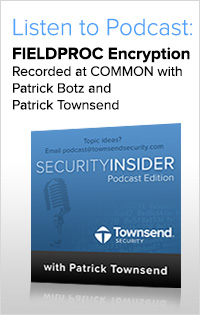 Patrick Townsend, CEO and Founder of Townsend Security, recently sat down with data privacy expert Patrick Botz at this year's COMMON exposition to discuss FIELDPROC, encryption key management, and what these changes mean for retail merchants who must comply with PCI-DSS. Here is an excerpt from that discussion:
Patrick Townsend, CEO and Founder of Townsend Security, recently sat down with data privacy expert Patrick Botz at this year's COMMON exposition to discuss FIELDPROC, encryption key management, and what these changes mean for retail merchants who must comply with PCI-DSS. Here is an excerpt from that discussion:
Patrick Townsend: Patrick Botz, can you tell us why encrypting sensitive data is more important than ever, and how FIELDPROC can help IBM i customers easily encrypt sensitive data and meet compliance regulations?
Patrick Botz: I think encryption is something that we're realizing everyone should have been doing a long time ago. Today many businesses are required or recommended to encrypt sensitive data by data security regulations such as PCI-DSS, HIPAA/HITECH, GLBA/FFIEC, and many state laws. This is evidence that encryption is extremely important today, not just from a security point of view, but from a compliance point of view. FIELDPROC is an excellent tool that IBM has added in V7R1 that makes it easier for ISVs to provide efficient and easy to use encryption without having to change programs. This is huge for customers. In fact, I've worked with at least two customer groups so far who's primarily reason for upgrading to V7R1 is to be able to use products that use FIELDPROC.
Townsend: Jumping from V5R4 to V7R1 is a supported path, right?
Botz: Right!
Townsend: Patrick, I know that you're company, Botz & Associates, does a lot to help IBM i customers with their security projects, can you describe a typical encryption project and how FIELDPROC has saved them time, money and aggravation in terms of getting the project done?
Botz: Yes, there is a pattern these projects tend to follow. Before they embark on their encryption project, the first discussion I have with and IBM i customers is to answer questions such as, how many programs am I going to have to change and how long is it going to take because we can't afford to have our systems down. Then when we start talking about the different products that take full advantage of FIELDPROC, and how they won't have to change their programs to do encryption with FIELDPROC. Once we get to that point, customers are ready to jump in and they're excited! The next step is to discuss if they want to encrypt just the fields with personally identifiable information (PII) or the whole database. From that point on it's a pretty easy process to get data encrypted.
I see many IBM i customers trying to do their own encryption, and one of the things I say to people is, "Have you heard the phrase 'it's not rocket science'? Well, with encryption, to make sure you get it right, it approaches rocket science." The fact is that customers really need to pick a solution that handles not only the encryption, but the key management as well. In my opinion the most important part of encryption is key management. I like to use the analogy of using a padlock: If you buy the world's best padlock for your backyard shed and then you pound the nail on the shed right next to the padlock and hang the key there, is that best padlock doing you any good...
In case you missed the presentation by Patrick Townsend and Patrick Botz, we recorded their session and have made it available for online listening. Download the podcast "FIELDPROC Encryption on the IBM i" to learn more about:
-Encryption Key Management with FIELDPROC
-The importance of certifications
-And what QSA and compliance auditors will look for in your key management system
 Patrick Botz is an internationally known information security expert, specializing in security as a business requirement first, and as technology second. His passion for SSO began while working at IBM which he joined in 1989. He held several positions at IBM, including Lead Security Architect and founder of the IBM Lab Services security consulting practice. He architected the SSO solution for OS/400 and i5/OS, and he holds several security-oriented patents.
Patrick Botz is an internationally known information security expert, specializing in security as a business requirement first, and as technology second. His passion for SSO began while working at IBM which he joined in 1989. He held several positions at IBM, including Lead Security Architect and founder of the IBM Lab Services security consulting practice. He architected the SSO solution for OS/400 and i5/OS, and he holds several security-oriented patents.

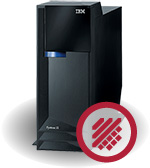 FIELDPROC has been out for just over a year
FIELDPROC has been out for just over a year


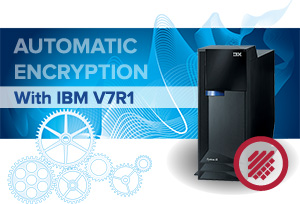 The newest version of the IBM i (AS400) operating system, V7R1, brings sophisticated new security tools from IBM’s larger systems to mid-range markets. These new features allow third-party companies such as Townsend Security to offer NIST-certified automatic AES encryption, so that you can now encrypt your sensitive data without application changes!
The newest version of the IBM i (AS400) operating system, V7R1, brings sophisticated new security tools from IBM’s larger systems to mid-range markets. These new features allow third-party companies such as Townsend Security to offer NIST-certified automatic AES encryption, so that you can now encrypt your sensitive data without application changes!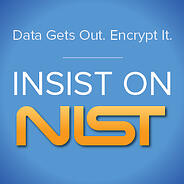 While FIELDPROC was introduced nearly two years ago with IBM i V7R1, it is becoming new to administrators who are finally upgrading to the latest IBM i OS. Lucky for you newbies, we have plenty of experience with this release and can share a wealth of knowledge for your encryption project. FIELDPROC allows us to bring you automatic encryption – encryption with no application changes! We recently hosted a webinar titled “
While FIELDPROC was introduced nearly two years ago with IBM i V7R1, it is becoming new to administrators who are finally upgrading to the latest IBM i OS. Lucky for you newbies, we have plenty of experience with this release and can share a wealth of knowledge for your encryption project. FIELDPROC allows us to bring you automatic encryption – encryption with no application changes! We recently hosted a webinar titled “

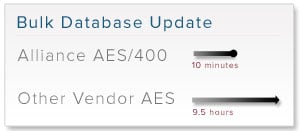 I think this is a pretty good baseline of minimum performance our customers will see with our
I think this is a pretty good baseline of minimum performance our customers will see with our 